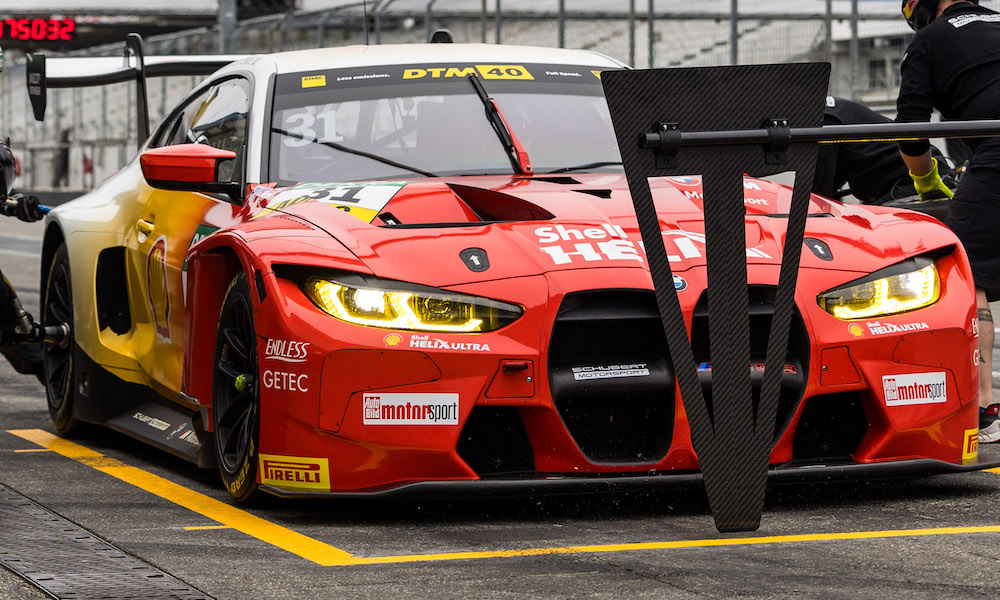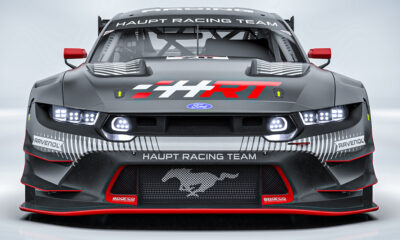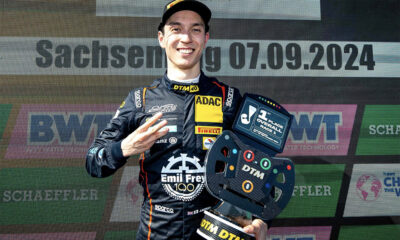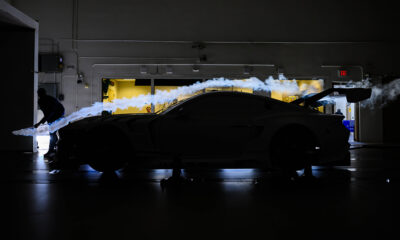
Photo: BMW
BMW’s condensed, three-car effort with Schubert Motorsport in DTM has ‘clear benefits’ according to 2022 champion Sheldon van der Linde, as it gives the team “more tools in the toolbox” when it comes to data collection and setup work.
The Munich manufacturer has downsized its presence in the German sprint series from four cars to three this year, opting for a one-team structure that will see Van der Linde, Rene Rast and Marco Wittmann all compete under the Schubert banner.
Last year, the Oschersleben-based squad was joined in the BMW camp by Team Project 1, which fielded a full-season entry for Wittmann and a second car for series newcomer Sandro Holzem from the Nurburgring round onwards.
But while Schubert picked up race wins with both Van der Linde and Rast, Project 1 failed to reach the podium and folded earlier this year, declaring bankruptcy in February.
Even though BMW’s decision not to bring in a replacement second team means it will have less cars on the grid compared to the likes of Mercedes-AMG and Lamborghini, Van der Linde told Sportscar365 that he sees several upsides to the new structure.
“The benefits are quite clear,” he said.
“I think we have three champions in the team with a lot of experience in DTM and the benefit is that Marco can bring whatever he learned last year at Project 1.
“There were obviously positives from his car last year that he can bring into the team now and we can all benefit from that.
“If you have another pro driver in the team, it’s just one more driver’s feedback that you can kind of take seriously and just from that alone you obviously have a lot more tools in the toolbox to work with the car and develop it on setup.”
Additionally, Van der Linde indicated that the driver pairing, consisting of three of BMW’s factory FIA World Endurance Championship Hypercar drivers, will keep of the three drivers sharp and motivated.
“We share quite intensively between the drivers, so as a driver you get pushed a lot more by your teammates,” said Van der Linde.
“If you have two teammates obviously you have to beat both of them, so in that case I think as a driver you get pushed a lot more.
“It’s obviously more difficult to outqualify two guys as opposed to one because you’ve got different strengths on every track.
“So every driver is going to have their strengths and weaknesses, but from that you always have a baseline where, if you can be the best driver amongst your team, you know you’re doing a good job so you have a way of referencing yourself as well.”
DTM has its number of full-season entrants notably shrink compared to last year. In addition to BMW, Audi, Mercedes-AMG and Porsche have all scaled back their presence on this grid.
Porsche’s downsizing has been one of the most notable cases, going from three teams last year (Toksport WRT, KÜS Team Bernhard and Manthey EMA) to just a single, two-car effort from Manthey while Audi is only represented by ABT Sportsline after Liqui-Moly Team Engstler and Tresor Attempto Racing both left.
It has resulted in a full-season grid of 20 cars, the lowest number since the series’ 2021 reboot when 19 cars lined up for the first campaign under GT3 rules.
The lower number of entries doesn’t concern Van der Linde, as he reckons DTM has been able to maintain the level of quality even with fewer cars on the grid.
“The pro drivers have mainly stayed, so all the big names which is important to DTM as well, I think have stayed from last year,” said Van der Linde.
“I think in terms of quality we haven’t lost anything. I think we’ve just kind of out teams with one car for example.
“That makes the series stronger in the sense that you have two cars, two pro drivers and that makes the championship more strong.”
























